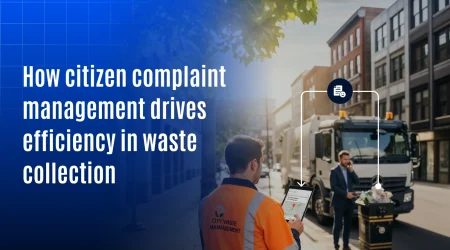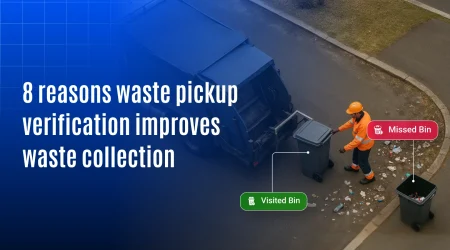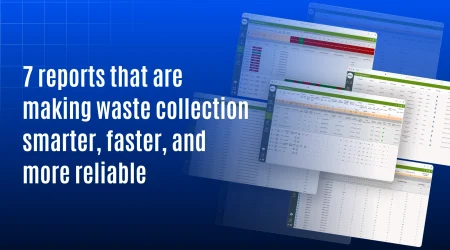A Comprehensive Guide to Choosing Fleet Management Software in Brazil

Brazil’s transportation sector stands at a crucial juncture. In 2023, the country’s freight transport industry moved more than 2.8 billion tons of cargo, representing about 70% of all cargo transport primarily via roads and highways (ANTT). That’s emphatic evidence of how vital fleet management software is in optimizing logistics in Brazil’s economy.
Yet, the sector is also grappling with challenges:
- A fleet of 52 million vehicles (DENATRAN data) faces rising fuel prices, complex regulations, theft risks, and pressure to achieve operational efficiencies and eco-friendly goals.
- Scarce digital transformation in many Brazilian businesses leads to inefficiencies like hidden maintenance costs, poor route planning, or unsafe driving habits.
That’s where fleet management software in Brazil comes in empowering companies to monitor vehicles in real time, reduce costs, comply with regulations like ANTT’s Tracking System, and improve driver safety.
In this in-depth guide, we’ll walk you through everything you need to know to choose the ideal fleet management software whether you’re managing a small delivery business in São Paulo or a national trucking operation crossing the Amazon.
Understand the core needs of your fleet
Before shopping for software, clarify what your fleet struggles with. Ask:
- Fleet size & structure: Are you managing 5, 50, or 500 vehicles? What vehicle types-trucks, vans, cars?
- Key pain points: Are your biggest issues fuel expenses, driver safety, route inefficiencies, or vehicle maintenance overhead?
- Compliance demands: Do you haul hazardous goods or operate interstate, requiring ANTT-approved tracking systems?
By aligning software needs with real-world pain points, you ensure you’re solving actual challenges not chasing generic features.
Prioritize real-time gps tracking & geofencing
Brazilian routes can be unpredictable dense traffic in Rio or São Paulo, isolated stretches in the interior Amazon, and ambiguous road conditions. So real-time visibility isn’t a luxury; it’s a necessity.
Choose software offering:
- Live vehicle tracking with maps reflecting Brazilian road data (e.g. Waze or Google Brazil maps)
- Geo-fencing capabilities establish zones to detect late departures, off-route travel, or unauthorized usage.
- Mobile alerts dispatchers and managers receive push notifications (WhatsApp, SMS, email) for delays or route deviation.
A solid GPS backbone enhances customer service, fraud protection, and security especially in areas where vehicle hijacking or fuel theft is a daily risk.
Optimize fuel management & cost control
Fuel costs account for a significant portion of operational budgets. In 2024, average diesel price in Brazil hovered around R$5.30 per liter, translating to major expenses even small inefficiencies cost you.
Look for a system that:
- Integrates with fuel card terminals and server-based logs in Volvo, Scania, and other local fleets.
- Detects anomalies in fuel consumption, idling time, or sudden price spikes.
- Offers predictive analytics suggesting more cost-effective refueling spots, e.g., popular Shell-branded stations with fleet discounts.
Strengthen vehicle maintenance & compliance
Unscheduled repairs kill uptime and erode profits especially with Brazil’s vast geography. Compliance-wise, ANTT’s tracking mandates (RNTRC rules) also affect cross-state journeys.
Effective systems should:
- Warn you about upcoming scheduled services oil changes, tire rotations, emission checks.
- Track vehicle health via OBD-II sensor data, identifying engine troubles before they escalate.
- Apply intelligent maintenance alerts based on driver logs and mileage.
By keeping vehicles well-maintained, fleets not only save money they extend vehicle lives and boost credibility with clients.
Elevate driver safety & accountability
Brazil records over 30,000 highway deaths per year 94% of which involve road users. Driver behavior must be a priority.
Software focused on driver safety includes:
- Recording events like harsh braking, aggressive acceleration, cornering, overspeed.
- Enabling in-cab voice coaching to instantly guide reckless behavior.
- Generating performance dashboards and monthly summaries (ideal for metrics-driven evaluations and reward systems).
Encourage drivers with incentives “top driver of the month” certificates or raffle awards based on safe driving habits.
Choose platforms aligned with brazilian infrastructure
Ensure the solution supports:
- Portuguese UI, support staff, and help resources.
- Integration with local services ANTT, DENATRAN, municipal toll booths, fuel stations.
- Integrations with Brazilian accounting software (e.g., Contmatic Phoenix, Protheus)
Vendor transparency in pricing (subscription + hardware + installation + support) and SLA guarantees are essential particularly considering road diversions, Amazon region connectivity issues, and satellite versus 4G fallback strategies.
Evaluate data security, privacy & legal compliance
Data protection is now a key compliance area. Brazil’s LGPD (Lei Geral de Proteção de Dados) mandates:
- User and driver access to personal data collected
- Clear data retention policies
- Secure encryption and restricted access
When considering a platform, verify:
- The provider’s LGPD compliance statement
- Usage of ISO 27001 compliant servers
- Certification for privacy audits in Brazil, especially if handling biometric or driver-license data
Weigh the benefits of cloud vs. on-premise
Cloud-based systems provide fast deployment, lower upfront costs, scalability, accessible mobile dashboards, and automatic updates popular with newer fleets. However:
- Some large Brazilian shippers with their own data centers may prefer on-premise deployments for full control.
- Others adopt a hybrid model critical region tracking on-premise with cloud analytics.
Choose based on your IT resources, budget, and data localization requirements.
Scalability: growth without gaps
As Brazil expands its logistics corridors (e.g., BR‑163 in Mato Grosso or BR‑319 into Amazonas), fleets see geographic stretches, remote management needs, and multilingual staff.
Scalable solutions include:
- Easily adding vehicles/drivers
- Tiered licensing for different users (e.g., admin, dispatcher, branch manager)
- Robust mobile apps supporting multiple languages and offline modes for remote areas
Ask vendors: “What’s your largest Brazilian fleet, and how many vehicles do they run?”
Vendor reliability & local support
Trustworthy local support distinguishes the leading software from beginner platforms. Ask:
- Do they have Brazil-based support or offices? (São Paulo, Brasília, Porto Alegre hubs)
- Local technical teams who understand regional challenges like network blackouts or weather events in Nordeste?
- A history of uptime and quick recovery no Brazil-wide outages lasting hours
Look for customer case studies and referrals from Brazilian fleet operators further supporting EEAT: Expertise, Authoritativeness, and Trustworthiness.
Total cost of ownership: beyond the sticker price
To estimate total costs, account for:
- Software subscription fees (monthly/yearly), often in USD or BRL
- Hardware installation and monthly modem charges (4G SIM or satellite)
- Maintenance, firmware updates, support, training
- Possible integration expenses with ERP systems or local gateways
- Hidden charges e.g., SMS alert fees, data usage over limits, API call rates
Negotiate predictable billing cycles or consider volume discounts if you’re adding hundreds of units over time.
Implementation: a smooth integration plan
Minimize risk and ramp-up time with:
- A pilot program say 10 vehicles in a single branch or city
- Evaluation over 4–6 weeks covering tracking accuracy, driver behavior insights, fuel data
- Structured feedback sessions
- Comprehensive staff training include dispatchers, drivers, and frontline supervisors
- A phased rollout adding branches, vehicles, and software modules one at a time
This incremental approach reduces resistance, uncovers real-world issues, and builds internal momentum.
Measuring success: key KPIs to track
Post-deployment, review:
- % reduction in fuel use; ideally, 10–20% savings within 6 months
- Reduction in maintenance costs or unplanned breakdowns
- On-time deliveries, measured by GPS logs
- Incidents speeding, harsh braking
- Driver rating scores and improvement over time
Publicize the improvements boosting stakeholder buy-in and creating positive feedback loops.
Final thoughts: a Roadmap to better fleet management in brazil
Implementing fleet management software is a strategic move enhancing operational efficiency, regulatory compliance, driver safety, and sustainability. But it’s not about installing a product; it’s about partnering with a provider who understands Brazil’s unique terrain, infrastructure, and regulatory framework.
Your Next Steps:
- Audit your top needs using our Brazil Fleet Needs worksheet
- Run a pilot with international-standard provider who speaks Portuguese and supports LGPD
- Scale gradually, measure performance, optimize processes, and celebrate success
Bonus checklist: choosing the right fleet management software in brazil
The roads of Brazil are vast and vibrant but they’re also unpredictable. When fleet challenges come your way, fleet management software gives you clarity, control, and confidence.
Take control of your fleet today start with a pilot, don’t wait till 2026’s logistics demand hits.




